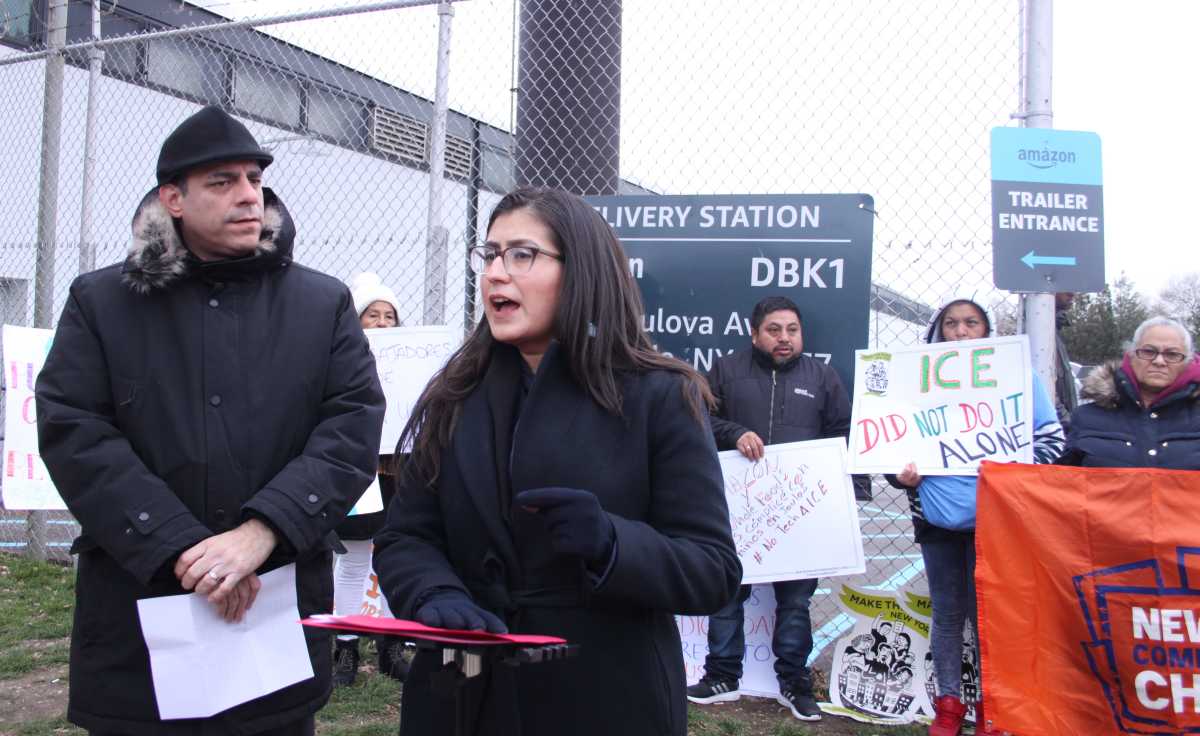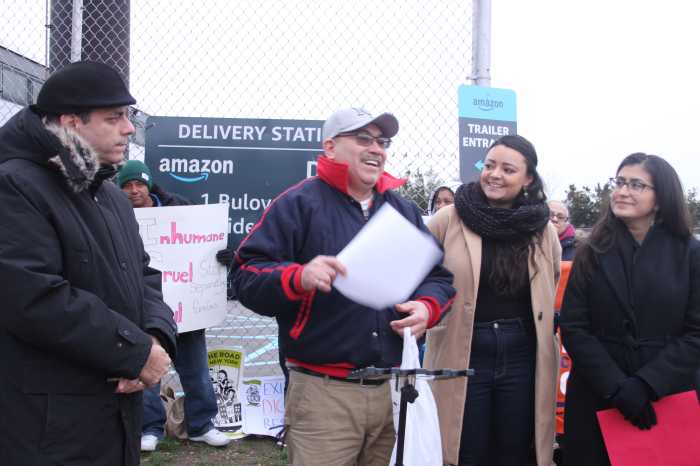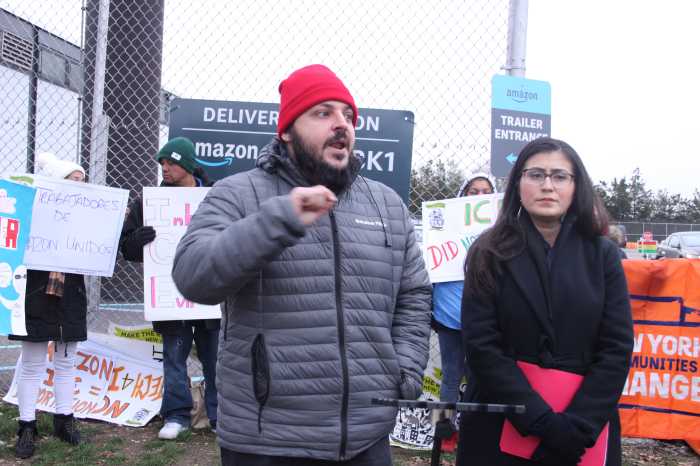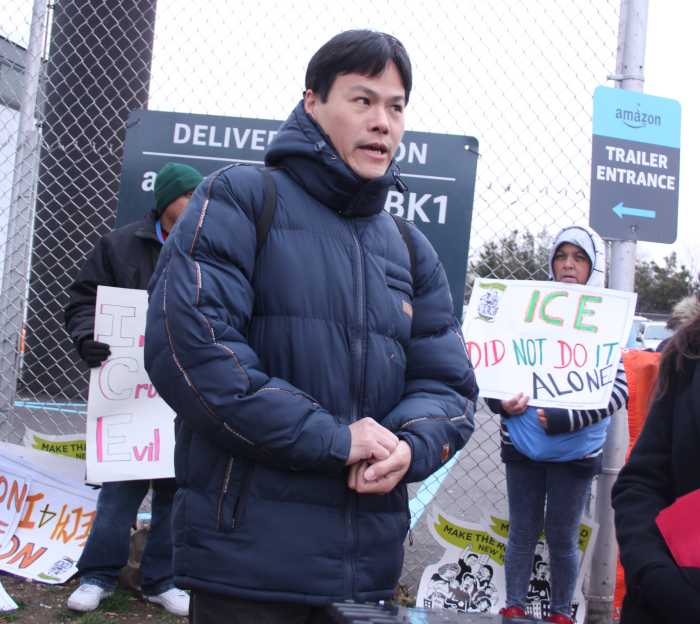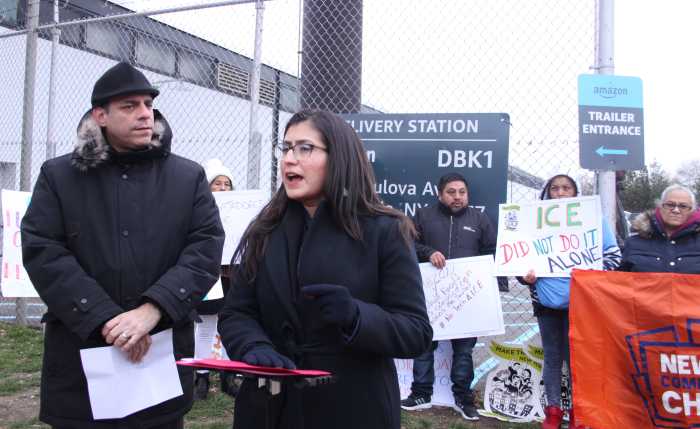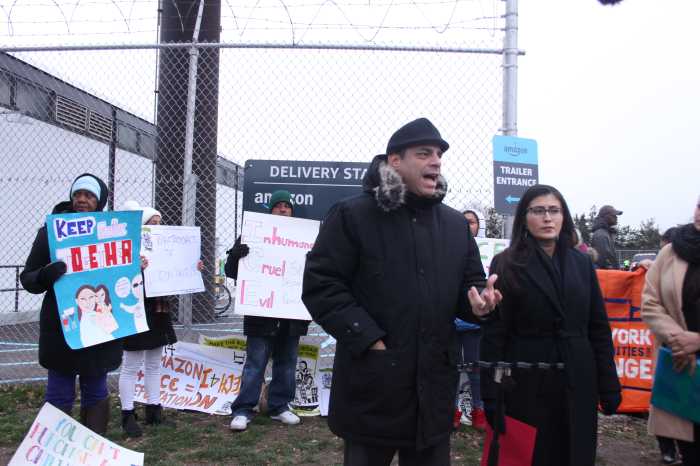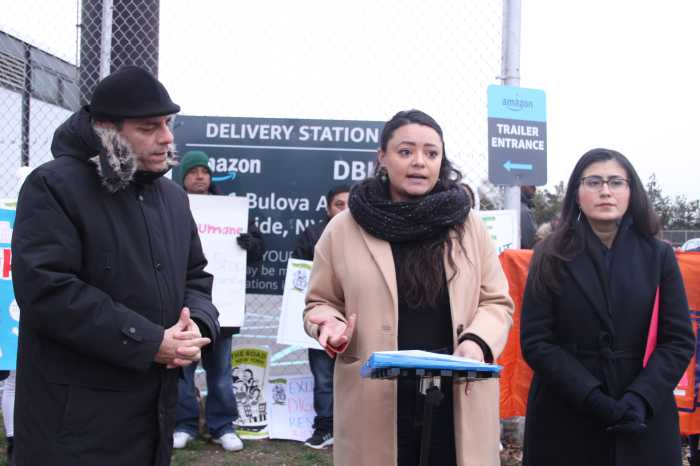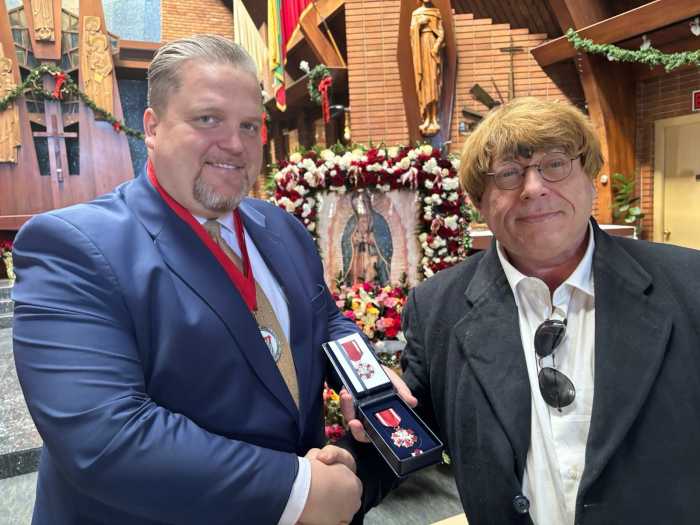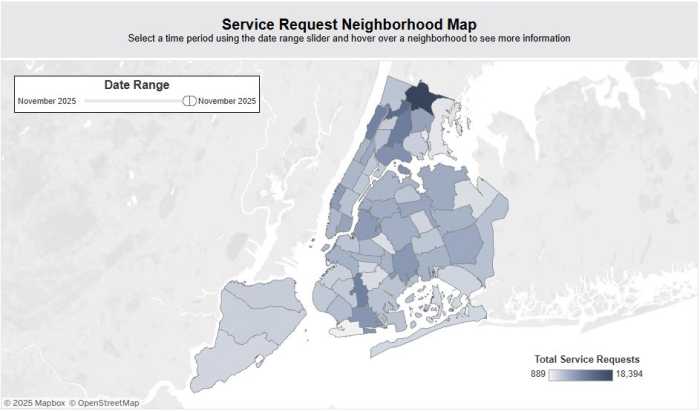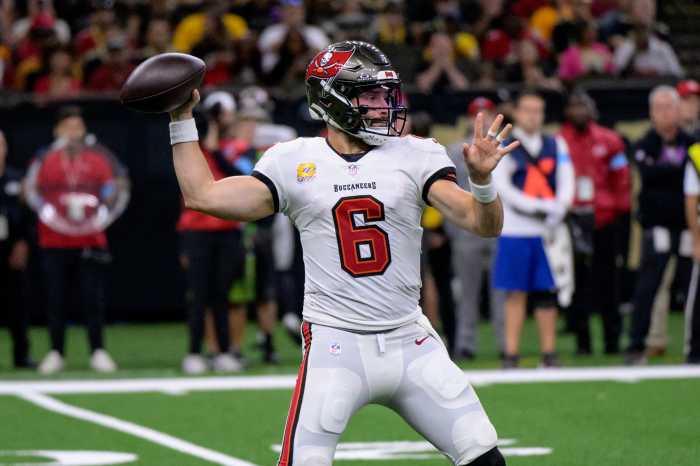Freezing temperatures and snow flurries didn’t stop community activists, former Staten Island Amazon warehouse workers, Senator Jessica Ramos and Queens Borough President candidate Costa Constantinides from protesting the future openings of Amazon distribution centers in Woodside and Maspeth, right outside of their newly opened warehouse in Woodside on Dec. 16.
That morning, Athena Coalition, a group of New York, New Jersey and other national organizations that advocate for working people in the U.S. — such as Make the Road New York, one of the organizers at the rally — released a report entitled “Packaging Pain,” which detailed the “hazardous conditions” that Amazon warehouse workers face during the holidays.
“We are here to express our outrage, we are here to express our concerns of the dangers facing workers inside of this facility and every single Amazon warehouse around the country,” Angeles Solis, lead organizer of the workplace justice team at Make the Road New York, said.
Some of the findings of that report include an injury rate that is three times higher than the national average rate — which is based on Amazon’s OSHA 300A log data from a total of 24 facilities from 15 states in comparison to logs of other professions from the U.S. Bureau of Labor Statistics’ Injury, Illness, and Fatalities Data for 2018. The full report is on their new website www.amazonpackagingpain.org.
At the rally, Make the Road Field Coordinator Juan Goris mentioned that they also found that the time period between Dec. 10 and 16 is “the most dangerous week of the year for people who work in Amazon’s distribution network.”
“For too long, Amazon has been able to get away with treating workers like robots. Workers leave these warehouses in pain everyday,” Goris said. “They feel they don’t have a choice because a robot determines whether they can put food on the table for their family. We must bring an end to these inhumane working conditions which thousands of New Yorkers have to endure everyday.”
Ramos echoed Make the Road’s statements during her speech at the rally, emphasizing that “in Queens, this is not the standard for good jobs and we will not stand for it.”
“According to data collected by the Athena Coalition, Amazon workers are more likely to be injured at work than police officers, lumber jacks or coal miners, and it’s truly a shame that one of the world’s wealthiest corporations subjects its hardest working laborers to such cruel workplace conditions. We need to provide relief from the brutal demands of their jobs immediately,” Ramos said.
Ramos also mentioned a press conference she held earlier this year when they learned about the warehouse in Woodside where they were standing, located at 1 Bulova Avenue, which opened recently.
“Because it was an as-of-right project, there was no requirement for community input so unfortunately our voices have long gone unheard by Amazon and by its CEO Jeff Bezos,” she said.
Councilman Constantinides, who was also against Amazon’s HQ2 earlier this year, added that in addition to unsafe working environments in the warehouses, Amazon’s next-day or two-day shipping has caused its drivers to get into car accidents, but often avoid liability for those accidents.
“We see the blue vans all over this community right now, zipping around our neighborhoods in a hurry to get where they need to go because a robot determines how quickly they need to make their delivery … we’ve witnessed several car accidents with these vehicles,” Constantinides said.
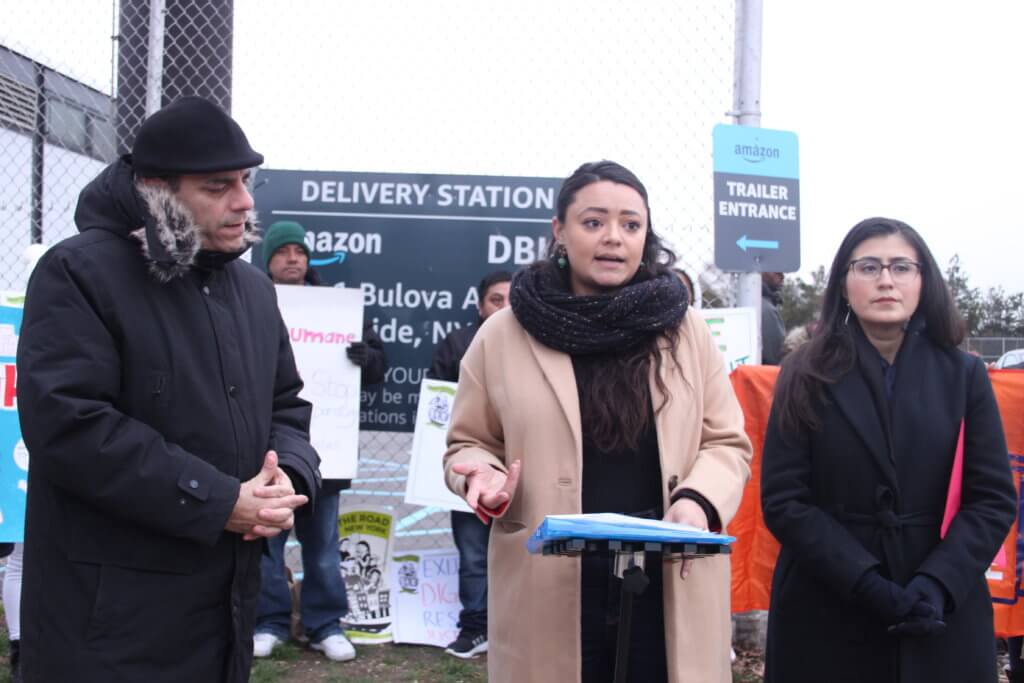
“If the richest man in the world and Amazon, one of the richest companies in the world, want to be here in western Queens they have to work with New York City union rules,” he added. “This is a union town. This is a town that stands up for labor, for workers, for those who need a voice.”
Former Staten Island warehouse workers Xuepeng Pang and Ilya Geller spoke at the rally about the treatment they endured at their Amazon location — which had its workers go on strike in November in demand of better working conditions.
According to Pang and Geller, the warehouse had tight surveillance and tracked their breaks — two 10-minute breaks and one 30-minute lunch break during a 10-12 hour-long shift — so that no time was wasted. They both emphasized that almost half of their break was spent walking to and from their lunch area in the “14 football fields long” warehouse.
At the rally, Solis read a statement from another former Staten Island Amazon worker Hiba Aly, who couldn’t make it to Woodside.
“While I worked at Amazon, I was constantly dehydrated and on the verge of fainting multiple times. I feared taking a break because I would be punished for ‘Time Off Task’ and potentially fired,” the statement read. “I was let go because Amazon demands unrealistically high standards of work and when I was sick at work, I could not meet them.”
Another member of Make the Road, Amado Sanchez, read a statement in Spanish at the rally which tied in Amazon’s work with Immigration and Customs Enforcement (ICE). In July, protesters in New York presented Bezos with a petition with more than 270,000 signatures demanding the company stop giving ICE and other government and police agencies data they collect from their customers.
“I have lived in Queens for several decades … I have fought for workers’ rights for many years and we achieved protections against wage theft, for sick days and more. But Amazon is putting all our victories at risk,” Sanchez said in Spanish. “I’m going to keep fighting Amazon so they listen to us. We will not let them abuse their workers. We will not let them collaborate with ICE. We are immigrants united against this monopoly. ”
Amazon’s response
QNS reached out to Amazon for comment on the rally and the report, and a spokesperson said that “no current Amazon associate participated in the event and it was obvious to the hundreds of individuals who work in our building that an outside organization used our site to raise its own visibility and spread misinformation.”
The spokesperson said that Amazon provides a “safe and quality work environment” in which their associates are the “heart and soul of the customer experience.”
In regards to the report, the spokesperson said that it’s “inaccurate” to say that their warehouses, which they refer to as fulfillment centers, are unsafe given the size of their workforce.
The spokesperson added that there’s a “dramatic level of under-recording of safety incidents across the industry,” and in an effort to combat that, Amazon took an “aggressive stance” in 2016 to record injuries “no matter how big or small.”
When it comes to the report, the Amazon spokesperson said that it was “developed and promoted by a collection of self-interested critics.”
“The fact is nothing is more important to us than safety — last year we provided more than one million hours of safety training to employees and invested more than $55 million on safety improvement projects, including ergonomic improvements,” the spokesperson said. “We continually improve safety at our sites by reducing physical risk through the design of processes, equipment and work areas, and we also have a Safety Leadership Index across our US operations where every associate answers a series of questions each month to directly tell us how they feel we can further enhance our safety culture.”
They added that they encourage anyone to see their warehouses for themselves by taking a tour at one of their fulfillment centers. People can schedule tours on their website at www.amazonfctours.com or email them at tours@amazon.com.

